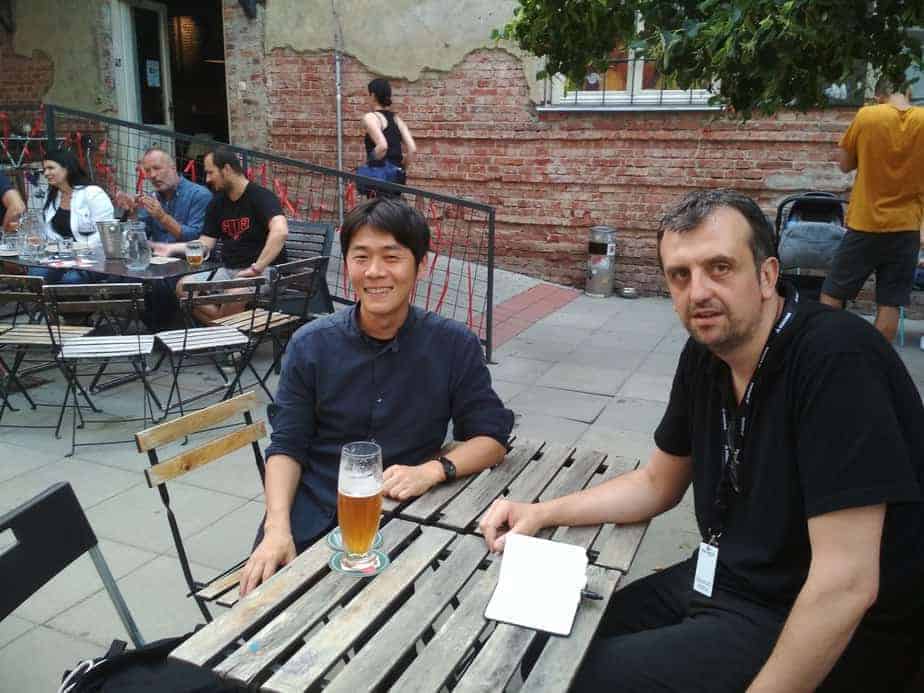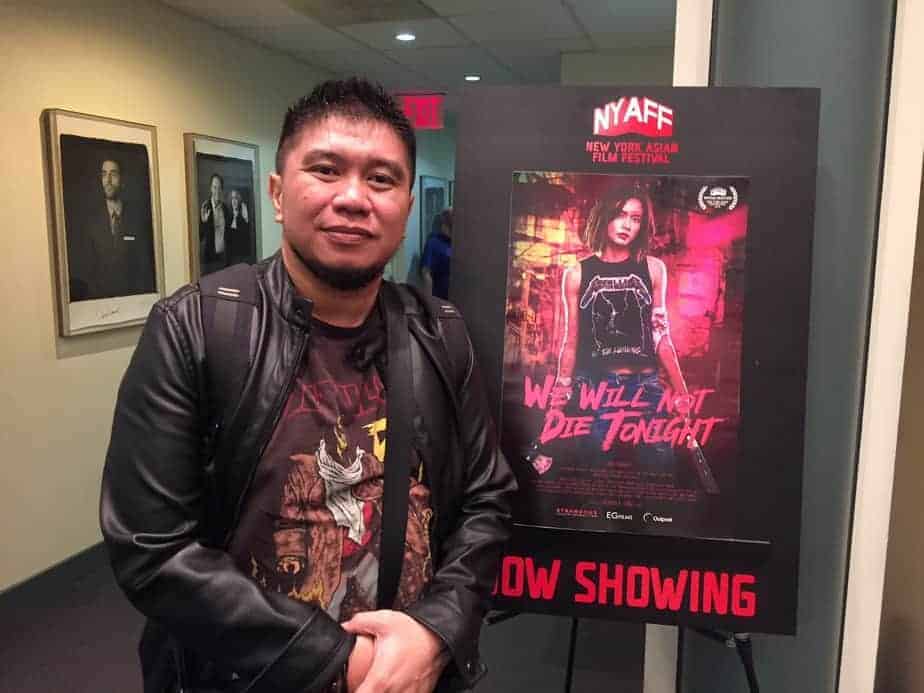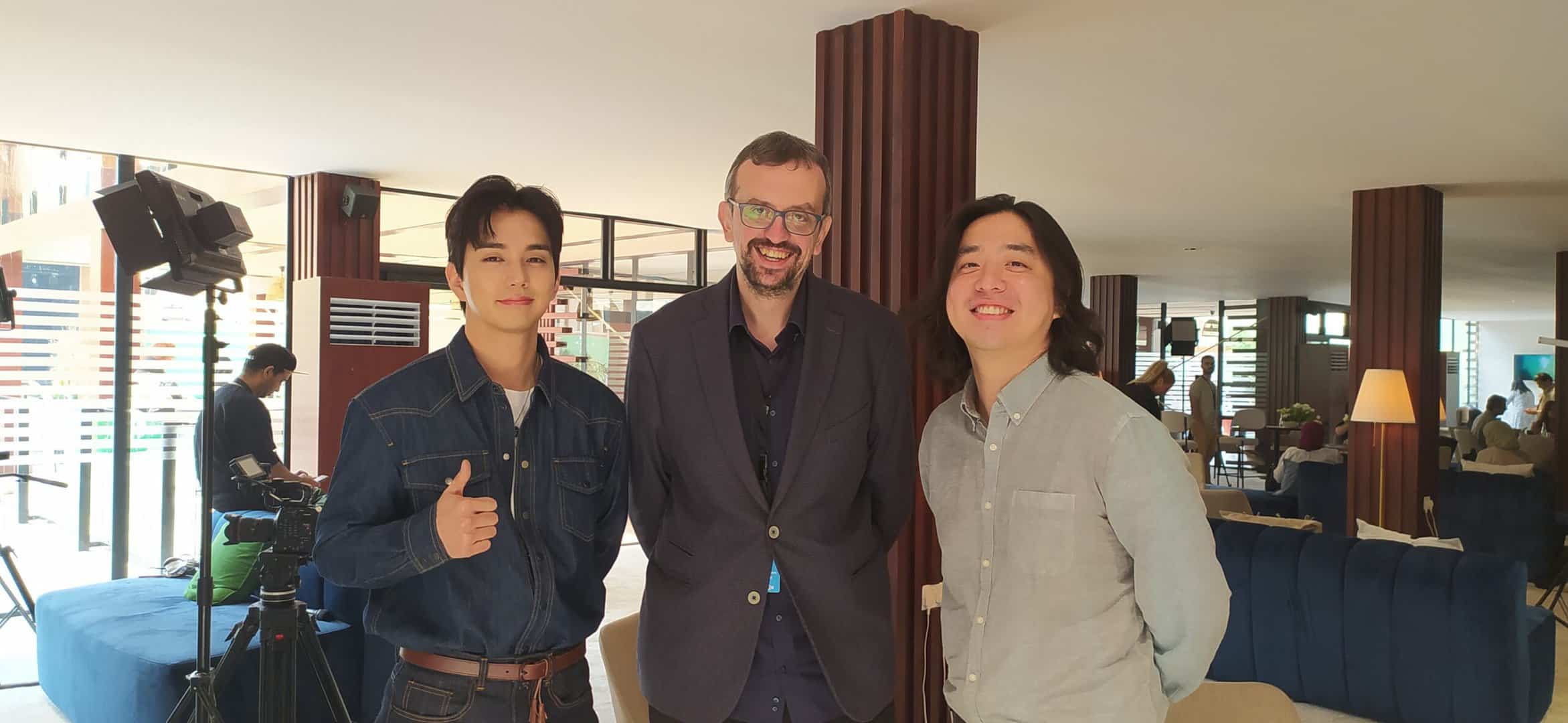With her debut feature film “A First Farewell”, Lina Wang won the Best Asian Future Film Award at the Tokyo international film festival and the Crystal Bear of the Generation Kplus section at Berlin this year. Born (1987) and raised in Shaya, Xinjiang, Wang studied at the Communication University of China in Beijing, before dedicating herself to the filmmaking.
The film centers on three Uighur primary-school children who live in a small village that borders with a vast desert. It's an intimate and warm story about the small community, that is indirectly addressing some of the Uighur pressing issues.
We interviewed Lina Wang via mail, after the screening of her film at the Cinemajove festival in Valencia.
What makes the Uighur region so attractive?
More than one hundred years ago, the anthropologist Lewis Henry Morgan wrote in his book “Ancient Society”, that the Tarim river is the cradle of the civilization. Whoever finds the golden key that was left behind by the old man in the Taklamakan desert, will open the door to the world's civilization. Historian Arnold Joseph Toynbee also said: “If I were given the chance of another life, I would choose to be born in the Tarim basin, because that's where the four civilizations converge.” I was fortunate enough to be born in Shaya, Xinjiang, in the Tarim Basin of the Taklamakan desert. It is the source for my film. Sailing on the Tarim river on boats made of populous wood, hearing the chimes from the camel bells and the rustling leaves from thousand-year-old trees, these are experiences you would have never imagined having. Only when you wander by the rivers, and cross the deserts, will you experience the depth and vitality of the area. Our childhood derived from this land, it embodies a sense of wilderness and freedom. In “A First Farwell”, I hope to present how that place makes me feel, and the memories I have, in the most realistic way.

Considering that you are from Shaya, were you inspired by concrete stories based on the true-life events?
When I saw Isa, he was barefoot and was feeding a lamb in his arms. When the lamb got stubborn, Isa kissed it to calm it down. That scene reminded me of my own childhood. We all had our feet covered in mud and we were tuned in with the nature and the animals. Then we experienced countless farewells, and in the end, we matured and grew up. I was born in the late 80s, and I've spent my entire childhood in a village at the edge of Taklamakan desert. I remember that after heavy rains, the mirage surrounded us with a mysterious atmosphere. Me and my childhood friend would lie under saltcedars and wait for a horse-drawn carriage to arrive. The roadside was covered with saltcedar flowers, further down the road was an orchard, a cotton field and the Gobi Desert. The air smelled of dirt and flowers, you could hear a horse trotting from afar and the Uyghur elders yelling: “Come along silly kids! My horse can take you home!” A lonely old man let us count the hairs in his moustache one by one, and he would later reward us with grapes from his basket. Many times, young men would come riding on their horses with hawks on their shoulders, galloping past in full speed, and we all wished to be just like them one day. Like Isa in the film, I had to leave home to attend the secondary school. It was also my first farewell to the life I was used to. It was through reading that I found another world, and it also made me who I am. I remember discovering Andrei Tarkovsky's “Sculpting in Time” and Chingiz Aitmatov's “Jamila” at the city library, and through reading my thoughts started shaping, gaining me spiritual independence.
In the film, the ancient, rural comes together with the modernised.
I would like to answer this question in a simple way. Kyrgyzstan writer Chingiz Aitmatov's work has a particular rhythm to it, it added a vibrant texture of the way I view everyday things. There was a passage in his book, “The White Ship”, that goes: “Is there a river wider than you, Enesai? Is there a land more beloved than you, Enesai? Is there a sorrow deeper than you, Enesai? Is there a freedom freer than you, Enesai?” The poem talks about a child living in a village, from an innocent perspective, it uses poetry-like words, professing his awe for the nature, beauty and kindness. It doesn't create oppositions between the natural and civilized, and from a humanitarian standpoint, the piece is very modern. I think it's important to view people and the world this way.
How did you cast the children?
I was very fortunate to meet these kids who are the soul of the film and truly magnificent. There were two approaches when I went field researching. One was sweeping the streets with my camera; the other was getting the information from schools, to see who had interesting stories to tell. I met Kalbinur in front of her house, dancing in front of a collapsed house in a red skirt. The sun beamed on it making it look sparkling, and she was like a fairy. Her laughter was crisp and pure, and that moment felt particularly moving, so I knew immediately that she was the one I was looking for. I found Isa when I read his school essay about his mother, where he wrote: “My mother came down from the stars above, she can't hear so I can only communicate with her with my eyes. My mother's heart is clear as the trickling water, she nourished me with love, and I live only for her.” Isa's essay really touched me, and when I went to his house, he was feeding a lamb that refused to eat, so he kissed it to calm it down. This picture reminded me of my childhood. We were all once with feet covered in mud and in tuned with nature and animals. Then we encountered countless farewells and matured and grew up in the end. The children in the film had to be able to move me, they had to be real, and other than that – there wasn't really any casting method. When I started shooting, those children who have never seen a movie before weren't even scared of the camera because they didn't think it was that important. They were themselves and expressive, I've learned a lot from them, because their view on life is limitless. They were like fairies that roam the earth freely, not caring about the norms and traditions, reminding us as that if we were to tell their story, we should all take a step back to our own childhoods.

How does it feel like to depict the world through the eyes of children?
Everything was very direct, but also marvellous and full of surprises.
I am also curious about the approach you took in working with local people, who played destinies similar to their own.
All of the characters in the film are amateurs. In order to make them be themselves in front of the camera, we had to come close to them, almost like their family, to build their trust. In this way it became easier to make them follow the directions we gave them and open up. So, in this case, half a year of field research and a year of documenting was very important. Through the process, you connect with people and the land, and you start understanding the everyday life, people's behaviour, their way of speaking and their culture. By using the documentary style, I connected my inner ideas with the world, instead of leaning on imagination only. This was the best way to reflect the world I live in and my way of thinking. I hope to see the poetic nature of everyday things, to break through that barrier of linear thinking and revive the subtleties, the complexities and true meanings in life.
Going back to the part about shooting the film, directing adults and children is different. You can let the adults know what you want and make them memorise their lines or use their own way of speaking. Then it's about rehearsing the lines and scenes repeatedly until you get the perfect shoot.
Which directors or films inspired you?
Inspirations are mostly from life, though I really like the directors whose films are poetic by nature, like Béla Tarr, Nuri Bilge Ceylan, Andrei Tarkovsky and Abbas Kiarostami.
The photography by your DoP Li Yong is beautifully dreamy. Was he your obvious choice from the beginning?
Li Yong was my research supervisor, and I was very fond of his cinematography which feels natural in every way. We work with each other really well. The mutual understanding came from the realness and sincerity we hope to have in our works. We actually connected from the start during the field research, and we were constantly exchanging ideas. I was fortunate to be able to learn from him and grow, and at the same time, our collaboration was an unforgettable experience. Because the constant interrupting and re-starting of a scene isn't good for the actors, we would discuss them before shooting and therefore communicating less during the shooting. I prefer poetic realism, so the camera movement is poetic, structurally like a prose. I'm opposed to strict logics, this is a mutual understanding between me and my crew, so many times there will be movement in a scene or just a static observation.
Before shooting “A First Farewell” I spent a whole year documenting the people from the area. I lived with the children and listened to their stories. I found myself not wanting to move the camera away from these faces.















